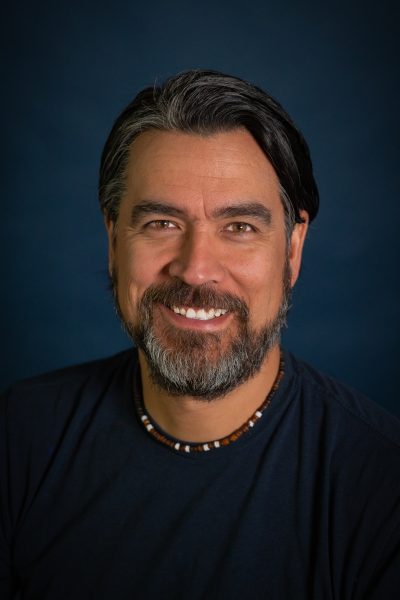
“A lot of the stuff is uncomfortable for the reader, not because it’s scary, but because it really happened,” said David A. Robertson, author of God Flare – volume three of The Reckoner Rises series.
This literary work depicts the systemic violence faced by Indigenous communities through superhero action sequences and themes of friendship and loss.
God Flare was released on Sept. 3 under Portage and Main Press and focuses on Cole, a disillusioned teenager trying to save his community from Mihko Laboratories, a terrible research facility that echoes the horrors and realities of the not-so-distant past.
Robertson advocates and empowers Indigenous youth through Cole and Eva’s story. He reveals the violent histories and trauma that the Indigenous community in Manitoba has undergone. Since reading the story, I look around at Winnipeg and I see it differently. I see it from the eyes of Cole and Eva — the eyes of Indigenous youth.
“I want people to be aware of Indigenous issues. I want them to be more aware of what’s going on with the Indigenous communities around our province, about the history of this province in this country,” said Robertson. “I want them to look at this city with a different lens. This series is a vehicle that allows me, among many things, do that.”
In the story, the evils Cole faces reflect real-life atrocities as Mihko Laboratories — the villainous superpower — commits horrors against Cole’s community.
The lab conducts vile experiments that disrupts the life of community members, mirroring environmental issues like toxic waste and deforestation that now taint the quality of life of Indigenous peoples.
These plotlines re-echo the trauma of Indigenous youth. Robertson’s storytelling is purposefully uncomfortable, blending history with fiction to bring awareness to readers.
“There’s a lot going on here that happened in real life, but there’s a lot of truth in fiction,” said Robertson. “Taking that reality and fictionalizing it into a graphic novel scene hopefully sheds light on the real history of this country.”
The three volumes of The Reckoner Rises explore elemental power and magic. Robertson uses these elemental power systems to highlight the Indigenous community’s connection to nature.
“It was this tricky balance in wanting to utilize powers that are drawn from the natural world, like fire, for example […] It’s wanting to make sure I respect the connection and reverence that Indigenous people have for the natural world,” said Robertson.
In Breakdown, volume one, Cole’s character struggles with anxiety as Mihko haunts him. In Version Control, volume two, Robertson’s characters and imagery continue to evoke deep emotion in the reader. Cole and Eva support each other unconditionally and Eva’s individuality and agency shine through. These characters embody Indigenous teens’ agency and empowerment.
“I wanted it to be this strong, female, Indigenous superhero […] Eva has always known exactly who she is, and she’s always been confident and assured of herself,” said Robertson. “A lot of times, she’s like the rock for Cole.”
More so, through this series, Robertson brings necessary representation to Indigenous superhero stories. In western media, Indigenous superheroes are underrepresented. For example, Dani Moonstar, an Indigenous Marvel character, is not included in the cover of the A-force, an all-female superhero team comic cover released by Marvel.
As God Flare continues to explore themes of friendship and survival, Robertson’s work uplifts Indigenous youth and paints Winnipeg in a unique light. With God Flare now out, readers can be eager to see how Cole and his friends confront the new horrors unleashed by Mihko Laboratories.

